While home improvement loans have many benefits, they’re not something to take lightly. They can impact your financial future significantly, so borrow responsibly to avoid unnecessary distress. While you can’t eliminate all risks, you can improve your chances of financial success.
Loan type, interest rates, fees, and repayment terms are all factors you should consider. Evaluate your current financial situation and be honest about your capacity to repay. Your home improvement loan should support your financial needs and long-term goals.
If you’re a homeowner, you know the expenses never end. There’s more you have to repair as your home gets older. You might even need to spend on a full-blown renovation if your home systems and structure have major issues or your family has outgrown your residence. Major home repairs and upgrades can be heavy on the pocket. Fortunately, a home improvement loan can help fund these projects.
Definition and Purpose of Home Improvements Loans
A home improvement loan is a type of financing specifically for home improvement projects. You can use it as a renovation loan if you need to refresh old or damaged parts of your home. It can also work as a remodel loan, which is ideal if you want to expand your space or give it a new look.
Like investment property loans, a home improvement loan can also be an investment. Using it for strategic upgrades, like building a deck or installing a marble countertop, can boost your home’s value. There’s a huge earning potential if you sell your property in the future.
Lenders can offer home improvement loans as a personal unsecured loan. They’ll base the repayment terms on your credit score. But you can also get it as a secured loan, with your home equity as the basis. The best home improvement loan type depends on your goals for your home and financial capacity.
Types of Home Improvement Loans

There are six types of home improvement loans, each with unique benefits and disadvantages. Some are better for smaller, less expensive projects. Others are for larger-scale ventures that require your home as collateral.
Here are the different types in detail to help you decide which one makes the most sense for you:
Personal Loans
Personal loans are the most common type of home improvement loan. You can get them from various lenders who usually offer them as an unsecured loan. Loan terms range from two to seven years, while rates can be anywhere between 6.70% to 36%.
You don’t secure a personal loan with your home. Lenders don’t usually consider information about your property. Instead, they’re more concerned with your income, credit score, and other financial credentials. That makes personal loans ideal for those who don’t want to put their house up as collateral. They’re also perfect for those with little home equity.
The best advantages of personal loans are that you can get them quickly, and your home is safe in case of failure to repay. But that can be a double-edged sword. It’s your credit score and earning power on the line if you don’t pay on time. Personal loans also tend to have higher interest rates and follow a set schedule.
Home Equity Loans
Home equity loans are a favorite among homeowners because of the lower interest rates. It’s a secured loan that uses your home as collateral. Because it’s safer for lenders, it’s also cheaper for borrowers. You can borrow up to 85% of your home equity for repairs and renovations.
Another benefit is that it’s an addition to your mortgage, and every payment you make goes toward the starting principal. That means you can rebuild your equity quickly. In addition, home equity loans have fixed rates, letting you lock in lower monthly payments.
But as with any loan, it has its downsides. It’s trickier to get than personal loans because it’s like taking out a second mortgage. You have to go through a more complicated underwriting process. It’s also not the best option if you have little home equity, as you can’t borrow much. There’s also the risk of losing your home if you fail to repay your loan.
Home Equity Lines of Credit (HELOCs)
You can think of HELOCs as a cross between home equity loans and credit cards. Lenders will approve a limited amount of credit, and you can borrow money as needed. Just be sure to stay within the maximum amount. There’s no risk of borrowing too much money you have no use for. You can borrow as the expenses come up during your home renovation.
Like home equity loans, you secure HELOCs by putting your home up as collateral. You can usually have as much as 85% of your home equity for your credit limit. However, many lenders prefer that you have at least 20% home equity before they accept your loan request.
Other disadvantages of this loan type are the tedious underwriting process and variable rates. If rising interest rates scare you, you might want to look at other home loans. Also, you must follow the repayment terms closely because your home is on the line.
Cash-Out Refinances
A cash-out refinance involves taking out a new mortgage higher than your current balance. You then pay for the existing loan and cash out the remainder to fund home improvement projects.
It may seem like a drastic choice, but it’s a good option for those planning to refinance their home. A cash-out refinance comes with all the perks of regular refinancing. That includes lower interest rates, more affordable monthly payments, and shorter terms. You can consider it as an alternative to bridge loans.
However, this loan type is only ideal when rates are low. That ensures you’ll have enough funds for repairs and renovations. It should also be part of your plan to stay in your home for at least the next ten years. Only then is it a financial payoff.
FHA Rehab Loans
FHA rehab loans hit two birds with one stone, combining the cost of purchasing a home with repair and renovation expenses. It’s like a mortgage and a home improvement loan rolled into one. It’s an alternative to USDA home loans and mobile home loans.
This government loan program caters to low and middle-income families. It’s helpful if you’re buying a fixer-upper because you automatically have the budget to make it livable. You can also use it to purchase an older home and return it to its former glory. The best part is the affordable down payment, which can be as low as 3%.
You can get FHA rehab loans from HUD-approved lenders. They’ll base the rates on your income and credit score. This loan type gives you two options. You can take out a limited 203(k) loan if your home improvement projects are less than $35,000. But if you need more funds, you can apply for a standard 203(k) loan.
How to Choose the Right Home Improvement Loan
Home improvement loans aren’t something you should jump into. Like how you would with big purchases, take your time and shop around for the best one. Here are some factors you need to think about before you take the plunge:
- Loan Requirements
Lenders have unique requirements that borrowers must meet. For example, those offering personal loans might have minimum salary requirements. They might also look at your debt-to-income ratio and credit history. Meanwhile, lenders of home equity loans and HELOCs look for a certain level of home equity.
Consider these requirements so you don’t waste time applying for a home improvement loan you’re not qualified for.
- Loan Amount
It’s crucial to get the loan amount right. You don’t want to go ahead with repairs and renovations only to realize you don’t have enough money. Your homework is to define the scope of your project and get an estimate of how much everything will cost. The amount you need will tell you what loan type you should get.
If you need a sizable loan for renovation and have high home equity, HELOCs and home equity loans are good choices. But if your home equity is still low, consider a personal loan as an alternative.
- Repayment Terms
Repayment terms can be tricky. You can go for a longer term to bring your monthly payments down. But that means you’ll be in debt longer and pay more interest in the long run. Meanwhile, a shorter term means lower interest, but prepare to shell out more monthly.
Calculate how much you can afford monthly and estimate long-term interest costs. Weigh your options and see what kind of loan term most benefits you. Also, don’t forget to factor in loan fees. You might have to make additional payments during the application and throughout the life of your loan.
- Underwriting Process
There are some home improvement projects you can’t delay. If it concerns safety, procrastinating can lead to costly consequences. Fixing a damaged roof and replacing a faulty water heater are some examples of urgent tasks.
Consider how soon you need money and choose your loan type accordingly. A personal loan is your best bet if you need funds quickly. Lenders usually only take a week or so to approve loans. Home equity loans and HELOCs have more tedious underwriting processes and take longer to release funds.
Applying for a home remodel loan or home renovation loan can be overwhelming. If you don’t know where to start, these steps and tips can help you through the tedious process.

Application Process for Home Improvement Loans
Applying for a home remodel loan or home renovation loan can be overwhelming. If you don’t know where to start, these steps and tips can help you through the tedious process.
Step-by-Step Guide
- Do your research. Study the different types of home improvement loans and understand their requirements, advantages, and drawbacks. Knowing these details will help you choose the best loan type for your needs and budget.
- Shop around. Don’t settle for the first provider you see. Talk to various lenders and compare their interest rates, fees, and repayment terms. Also, ask them the maximum amount you can borrow.
- Gather the required documents. Lenders want to know as much about you and your capacity to repay. They will ask for various requirements, including your valid ID, proof of residence, and income. To make the application process as painless as possible, ask for a list of required documents so you don’t miss anything.
- Take advantage of prequalification. Some lenders offer a prequalification process, which can help you gauge your interest rate, total loan cost, and chances of approval. You can get a prequalification from different lenders to help you compare their offerings. Prequalifying doesn’t require hard credit checks or signing paperwork.
- Finalize your application. Once you’ve decided on a lender, contact them to start the application process. They’ll ask for your documents and ask you to sign official paperwork. If the lender approves your application, you’ll receive the funds in your bank account.
Documentation and Eligibility
Loan documentation is crucial in the application process. Every home improvement loan type has a unique set of requirements. And every lender has their own criteria for eligibility. You must provide all the necessary documents to get the funds you need for your home improvement project.
While the requirements vary, these four are the most common:
- Proof of identity – The first task for any lender is to confirm the borrower’s identity. You typically must present two identification proofs, like your birth certificate and social security card.
- Steady income – Lenders want assurance that you can pay them back. They will ask for proof of income, like bank statements and tax returns.
- Low debt-to-income (DTI) ratio – Your DTI ratio tells lenders how much earnings you have left after your monthly debt repayments. Many lenders prefer borrowers who have less than 35% DTI.
- Good credit score – Your credit score gives lenders an idea of your credit behavior, including how likely you’ll pay on time. Lenders usually prefer credit scores above 670, but some will lend money to borrowers with lower scores. That usually comes with higher interest rates, though.
Tips for Successful Application
It’s a frustrating experience to have your loan application denied. But there are some steps you can take to spare yourself the stress of rejection. Put your best foot forward and increase your chances of getting approved with these tips:
- Improve your credit score. When you clean up your credit profile, lenders will see that they can trust you. Raise your credit score by tackling outstanding balances and paying your debts on time. Ask for your credit report so you can troubleshoot your problem areas.
- Increase your income. That will help improve your DTI ratio, assuring lenders you can repay them. If it’s appropriate, you can ask your employer for a raise. Or you can find a side hustle that can boost your earnings.
- Lower your debt. As you work to raise your income, try to pay off your debts, too. That will lower your DTI ratio, proving to lenders that you can manage debts well and take on a new loan.
- Don’t ask for more than you need. A large loan amount is riskier to lenders and can lower your chances of approval. Get an accurate estimation of what you’ll need for your home improvement project and stick to it.
There are already so many expenses in life to keep up with. Adding a loan on top of everything can be overwhelming. Not only do you have monthly payments, but there’s also interest to worry about. Unfortunately, interest rates tend to increase with time, adding even more to your plate.

Repayment Strategies
These strategies can help you stay on top of your home improvement loan obligations and avoid unnecessary stress:
- Create a budget. List down your monthly expenses, including mortgage, utility bills, and groceries. Deduct them from your monthly income to see how much you can allocate for loan repayments.
- Use automation. If you have a million things running through your mind, do yourself a favor and set up automatic loan payments. That way, you’ll never forget a due date and pay for penalties.
- Pay more than the minimum. If you have extra funds by the end of the month, you can add it to your next loan repayment. That will lower your total interest and decrease the loan term, helping you save in the long run.
- Refinance at the right time. When interest rates are low, that’s your chance to refinance your loan. That can help bring down your monthly payments and shorten your loan term. Remember to consider refinancing costs to ensure it’s a wise move.
Understanding Interest and Payments
Even if you’re not fond of numbers, it helps to know how monthly loan payments and interest work. Understanding these loan components will help you create a realistic budget and achieve your long-term financial goals.
Your interest rate, expressed as a percentage, is the amount lenders charge you for letting you borrow money. It’s how they earn. They base your interest rate on your credit history and score. Having a pristine credit profile will land you a lower interest rate. Your repayment term also has an impact on interest. If you opt for a longer term, you’ll accrue more interest over time.
As for your monthly payment, lenders compute it using your principal amount, interest rate, and repayment term. They’ll spread your principal amount and interest charges over your loan’s life.
Handling Financial Difficulties
If you encounter financial troubles during your loan repayment term, talk to your lender about them. They’ll want to help you repay because it’s their money on the line.
They might offer temporary solutions, like restructuring your loan or deferring payments, to help you through difficult times. Honest communication with your lender can prevent damage to your credit rating and help keep the relationship positive.
Impact of Home Improvement Loans on Credit and Equity
Home improvement loans come in handy when you’re in a bind. They fund repairs and renovations, helping restore your home’s beauty and structural integrity. However, be aware of their impact on your credit and equity.
You’ll experience a slight drop in your credit score when you apply for a home improvement loan. Lenders usually perform a hard inquiry to see the risk level you hold as a borrower. That pulls down your score. In addition, borrowing money increases your DTI ratio, negatively impacting your credit. Of course, your credit score will also take a hit if you’re late with your monthly payments.
Aside from credit risks, there are also equity risks. Secure home improvement loans use your property as collateral. Failure to repay on time can mean losing your home. There’s also the mistake of using too much of your home’s equity to get a bigger loan. Your home’s value will drop, and you can’t move out or sell it.
Have a Major Home Improvement Project? Borrow Wisely
Delaying home repairs and renovations can lead to even more expenses in the long run. If you want to start a home improvement project but don’t have the funds, know that you have options.
A home improvement loan can be the answer to your needs. If you do your due diligence, you can find a loan type that aligns with your budget and financial goals. Compare as many lenders as possible so you can find the best home improvement loan. With the right approach, you can live in your dream home without sacrificing your finances.













